Best Of
Why ‘Dear Zachary’ is the most upsetting documentary ever made
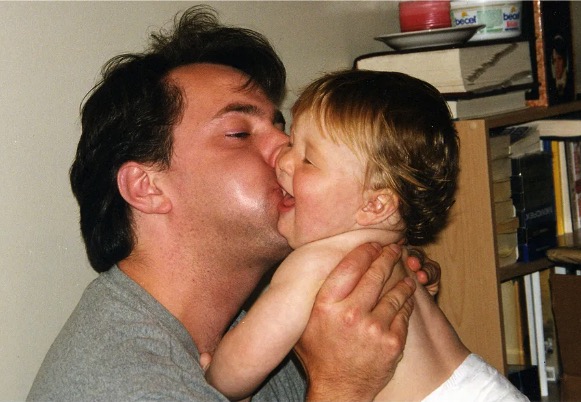

Dear Zachary: A Letter to a Son About His Father is hands down one of the saddest documentaries I’ve ever seen. I honestly don’t think I’ve ever been so moved by a film before – I completely broke down and cried watching it.
It hit me in a way I wasn’t expecting, and I haven’t been able to stop thinking about it since.
Gut-wrenching turn
Dear Zachary: A Letter to a Son About His Father is one of the most captivating documentaries I’ve ever watched, and I’m pretty sure I’m not the only one who feels that way. As heartbreaking and infuriating as this film is, it is still above all a beautiful tribute to friendship, courage and resilience.
If you haven’t seen Dear Zachary, it tells the heartbreaking story of Andrew Bagby, a 28-year-old doctor whose life was tragically cut short by his ex-lover, Shirley Jane Turner.
The film takes an even more gut-wrenching turn when it’s revealed that Turner was pregnant with Andrew’s child at the time of his death. A huge part of the documentary focuses on the relentless fight of Andrew’s parents, Kate and David Bagby, as they struggle to gain custody of their grandson, Zachary, and ensure his safety and future.
The film, which was written, produced, directed, edited, shot, and scored by Kurt Kuenne, was released in 2008. Kurt Kuenne and Andrew Bagby grew up side by side in the tranquil suburbs of San Jose, California.

Their friendship was one of those rare, unbreakable bonds formed in the simplicity of shared childhood memories. As they navigated life together, their paths intertwined in ways only the closest of friends could understand — until a heartbreaking tragedy would change everything.
Born on September 25, 1973, to parents Kathleen and David Bagby, Andrew was a medical student. During his time at Memorial University in Newfoundland, he began a relationship with Shirley Turner, a recent medical school graduate who was nearly thirteen years his senior.
Andrew’s family, friends, and colleagues didn’t like Shirley due to her off-putting behavior. They couldn’t help but feel that Shirley wasn’t really a good match for Andrew – especially her tendency to make inappropriate or overly sexual comments bothered them.
Shot 5 times
Still, they chose not to say anything, respecting Andrew’s decision to keep on dating Shirley. After all, he hadn’t been in a relationship since his painful breakup with his ex-fiancée, and they understood that he might have been looking for someone to fill the void. They didn’t want to add to his struggles by questioning his choices.
After Andrew graduated in 2000, he moved to New York to begin a surgical residency, while Turner relocated to Iowa for her own career. Despite the distance, they maintained their relationship.
However, in 2001, Andrew found himself unhappy in his surgical residency and decided to switch to a family practice residency in Latrobe, Pennsylvania, which he felt was a better fit for him. In fact, he couldn’t have been happier.
But as time passed, the relationship between Andrew and Shirley began to deteriorate, with Shirley becoming increasingly possessive.
In October of that year, Shirley purchased a handgun along with ammunition and began taking firearms lessons. During this time, she exhibited increasingly obsessive behavior towards Andrew, constantly calling him and verbally abusing him during their phone conversations.
On November 3, 2001, during a visit to Pennsylvania, Andrew broke up with Shirley.
She returned to Iowa, but just two days later, she drove nearly 1,000 miles back to Latrobe. Early on the morning of November 5, she arranged to meet Andrew at Keystone State Park. Later that night, he was found dead by a homeless man searching dumpsters for aluminum cans.
The police would later confirm that Andrew had been shot five times: once in the face, once in the chest, once in the back of the head, and twice in the buttocks.
Shirley Turner was immediately suspected, as the ammunition found at the scene matched what she had purchased earlier.
A new, shocking turn
She told authorities that she had been bedridden and sick all day on November 5th, yet evidence showed she had made phone calls from Latrobe, used Andrew’s house phone to call in sick, and accessed several of her personal accounts from his computer.
By the time a warrant was issued for her arrest, Turner had already fled to Canada. Once she learned she was a suspect in the murder investigation, she returned to her hometown of St. John’s, Newfoundland. Meanwhile, Kurt Kuenne began gathering footage from old home movies and interviewing Andrew’s parents, David and Kathleen, for a documentary about his late friend’s life.
Soon, the tragic story would take a new, shocking turn.
In St. John’s, Shirley Turner made a shocking revelation — she was pregnant with Andrew Bagby’s child
She was arrested in December 2001, but shockingly released on bail as the extradition process to the U.S. dragged on. Turner’s lawyers used legal technicalities to delay her extradition, and in the meantime, she gave birth to a baby boy, naming him Zachary, on July 18, 2002.
Determined to be part of Zachary’s life, Andrew’s parents, David and Kathleen, moved to Canada in an effort to gain custody of their grandson. In November 2002, a provincial court ruled that there was enough evidence linking Turner to Andrew’s murder, leading to her re-arrest. David and Kathleen were granted custody of Zachary, but the legal battle was far from over.
Legal battle
In an unexpected twist, Turner wrote a letter to the judge who had locked her up. In an unusual move, she was given legal advice on how to appeal her arrest and imprisonment. In January 2003, Judge Gale Welsh granted her bail, controversially stating that Turner didn’t pose a threat to society at large. This meant that, despite the murder charge, Turner regained custody of Zachary, though David and Kathleen were able to arrange regular visitations.
While this legal tug-of-war unfolded, filmmaker Kurt Kuenne traveled across the United Kingdom and the U.S., interviewing Andrew’s friends and extended family for a documentary. He even visited Newfoundland in July 2003, where he spent time with Zachary, trying to piece together the tragic story of his friend’s life and legacy.
On August 18, 2003, Shirley Turner tragically took her own life—and that of her thirteen-month-old son, Zachary—by jumping into the Atlantic Ocean in a heartbreaking murder-suicide. The devastating loss sent shockwaves through Andrew Bagby’s parents, David and Kathleen, who were not only grieving the death of their grandson but also enraged by the Canadian legal system’s failure to protect him. They launched a campaign to reform Canada’s bail laws, convinced that these laws had allowed Turner to kill her child and herself.

Meanwhile, Kurt Kuenne, who had been working on his documentary about Andrew’s life, found himself facing roadblocks in his efforts to interview the prosecutors and judges involved in Turner’s release. Despite this, the tragedy sparked a broader conversation. In 2006, a panel from Newfoundland’s Ministry of Justice released a report stating that Zachary’s death was preventable and that the government’s handling of the case was inadequate. Turner’s psychiatrist was found guilty of misconduct for helping her post bail, and the director of Newfoundland’s child welfare agency resigned.
David Bagby, consumed by grief and anger, poured his emotions into writing Dance with the Devil: A Memoir of Murder and Loss, which became a best-seller in Canada in 2007. Kurt Kuenne, who had been tirelessly documenting Andrew’s life, finished his film—one that had evolved into something far more profound than he could have imagined. The documentary, a raw and emotional tribute, was dedicated to the memories of both Andrew and Zachary.
But it wasn’t just a story about tragedy; it was about the resilience of the people left behind. The film ends with David and Kathleen, along with their friends and family, reflecting on Andrew and Zachary’s lives. Kurt, in the process of making the film, realized that it was not only about Andrew’s death but also about the profound impact the Bagbys had on those around them. The documentary was, in many ways, a tribute to their strength and perseverance in the face of unimaginable pain.

”The biggest challenge for me came in the editing of the movie, because this film transitioned from a project intended only for loved ones to one that was intended for a mass audience. I wanted the audience to feel like they knew Andrew and his parents, but I also needed to keep the story moving forward, to keep the audience engaged,” Kurt said.
When Kurt Kuenne set out to make Dear Zachary, it was originally meant to be a personal tribute — a cinematic scrapbook filled with loving memories for the son who would never get the chance to know his father, Andrew Bagby.
Kurt interviewed friends, family, and those who had known Andrew, capturing their remembrances of him in a film that would, in its own way, preserve the essence of his life. What began as a project for a small circle of loved ones soon turned into something much more profound.
As the tragic events surrounding Andrew and Shirley Turner unfolded, Kuenne realized that this story had the potential to reach far beyond personal circles.
He knew that Dear Zachary could bring attention to a flawed legal system that had failed to protect Zachary, and so, with great courage, he decided to release the film to the general public. The response was overwhelming, but the pain of watching such a heartbreaking story was almost too much for many to bear.
The film was difficult to watch, raw, and filled with anguish, yet it became a powerful tool for change.
Kuenne didn’t stop at the release of the film. He sent copies of Dear Zachary to every one of Canada’s 400+ members of Parliament, hoping to spark a much-needed conversation about the country’s bail laws. And it worked. After attending a screening of the film, MP Scott Andrews of Avalon was moved to action. On October 23, 2009, he introduced Bill C-464—also known as “Zachary’s Bill”—to the House of Commons. The bill aimed to ensure that the safety of children would be the foremost concern during bail hearings and custody disputes, especially when the person in question had been charged with a serious crime.
The bill was a direct response to the failure to protect Zachary, and it sparked conversations about the need for change in the Canadian justice system. After being introduced to the Senate in March 2010, it was signed into law on December 16, 2010—over seven years after Zachary’s death and more than two years after Dear Zachary was released. It was a hard-fought victory, one that showed the power of one film to change the course of legislation and protect future children from the kind of tragedy Zachary faced.
Even though Dear Zachary was an incredibly difficult watch for so many, its impact was undeniable. It didn’t just capture the life of one man and the loss of a child — it became a catalyst for change. The film’s release and the law it helped inspire were a testament to the power of storytelling to enact real-world change, proving that even the most painful stories can ultimately lead to justice and a better future for others.
Kuenne’s film is important because it doesn’t shy away from the brutal reality of loss. It’s not just a documentary about a man’s murder, but a heartfelt exploration of how families cope with grief, injustice, and the emotional scars that linger long after the cameras stop rolling. The rawness and honesty of the film make it not just a tribute, but a call to action — reminding us of the importance of justice, protection, and the indelible bonds of family.
And in my view, the Bagbys are among the most resilient and courageous people to ever walk this earth. They sacrificed so much to fight for the only remaining piece of their beloved son. Their strength in the face of unimaginable loss is nothing short of extraordinary.
After watching this, I honestly can’t decide if I’m more angry at the system that mishandled the entire case or at Shirley herself. It’s just heartbreaking. If only the system had done its job… if only.
For those with Amazon Prime, the film is available to watch there, and it’s also streaming on Pluto TV. Please share this article so more people can experience this incredibly tragic, yet important story.
You may like
Best Of
‘The View’ co-cost stirs attention over husband’s allegations
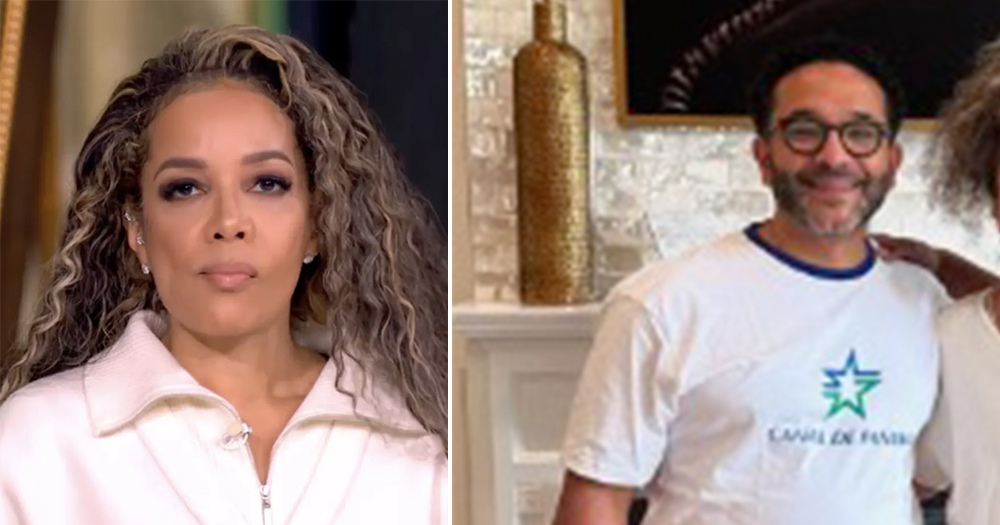

The year hasn’t started well for Sunny Hostin’s long-time husband.
Orthopedic surgeon Dr. Emmanuel ”Manny” Hostin is currently involved in a legal case that could have major consequences.
Met at a church
Asunción “Sunny” Hostin is a name many recognize, not only for her prominent role as co-host on ABC’s The View, but also as a respected lawyer, author, and legal analyst.
Born on October 20, 1968, Sunny’s journey has been nothing short of inspiring. She’s received nominations for Daytime Emmy Awards for her work on The View and serves as ABC News’ Senior Legal Correspondent.
But her personal life has been just as compelling.
Sunny and her husband, Dr. Emmanuel “Manny” Hostin, have been partners in life for over two decades. The couple first met at a church in Maryland while Manny was studying at Johns Hopkins University School of Medicine, where he graduated in 1996.

Sunny recalled that she had gone to church after a run and “certainly wasn’t dressed to attend service that day” when she first laid eyes on her future husband.
“He was gorgeous, decked out in a beautifully tailored suit,” she wrote. Wanting to meet him, she decided to follow him to a nearby bagel shop after the service and struck up a conversation.
Just two years later, in 1998, they tied the knot.
The couple now live in a luxurious 10-bedroom, 10-bathroom estate in Purchase, New York.
Five miscarriages
Over the years, they’ve navigated many of life’s highs and lows together, including Sunny’s open struggles with infertility. After enduring five miscarriages and IVF treatments, the couple was blessed with two children, Gabriel and Paloma.
“I thought, I need to talk about this so that women know they’re not alone and that it’s nothing to be ashamed of,” she has said.
Through it all, Manny, an orthopedic surgeon, has been by her side. But during the summer of 2022, Sunny made the decision to undergo a breast reduction, lift, and liposuction—a choice she described as both a health and self-care decision. “I feel like a better version of myself,” she told PEOPLE about the transformation.
However, not everyone was immediately on board. Her husband, Manny, had concerns, and two years earlier, both he and her The View co-host Joy Behar had convinced her to reconsider. Behar had warned about the risks of anesthesia, while Manny reassured her, saying, “You’re beautiful. You’re hot. You’re sexy.”
Followed her instincts
But Sunny ultimately followed her instincts. She scheduled the procedures without telling Manny until just two days before the surgery. “I wasn’t asking for permission or input,” she explained. “I was simply informing him—because I have full agency over my body, and this was something I needed to do for myself.”
Now, she feels more confident than ever. “I prance around nude all the time at my house—I feel great,” she said.

While Sunny thrives in the public eye, balancing her roles as a television host, legal analyst, and author, Manny is just as successful in his career as a sports doctor and surgeon. Together, they’ve built a life full of love, ambition, and family, making it clear that they’re not just partners in marriage but in every aspect of life.
Yet, despite their success, recent events have cast a shadow over their years of happiness.
The legal storm
In January 2025, Manny found himself involved in a legal storm, named as one of 199 defendants in a massive insurance fraud lawsuit under the RICO Act in New York. Manny, along with the others, is accused of accepting kickbacks for performing surgeries and submitting fraudulent bills to a company that insures taxi services and Uber and Lyft drivers.
The lawsuit, filed on December 17, 2024, claims that ”Hostin knowingly provided fraudulent medical and other healthcare services, including arthroscopic surgeries.”
The insurance company, American Transit, was allegedly billed ”in exchange for kickbacks and/or other compensation which were disguised as dividends or other cash distributions.”
Hostin’s attorney, Daniel Thwaites, responded to the allegations in January, telling DailyMail.com that his client ”denies each and every allegation” and described the lawsuit as a ”blanket, scattershot, meritless lawsuit by a near-bankrupt insurance carrier.”
Seeking over $450 million in damages
Thwaites went on to say, ”It is meant to intimidate and harass doctors from collecting for care provided to American Transit insureds and their passengers.” He defended Hostin’s reputation, calling it “impeccable” and pointed out that American Transit had filed the lawsuit without properly investigating Dr. Hostin or raising any concerns with his legal team.
”The real story here is about an insurance carrier abusing the legal system to limit and restrict health care benefits to its insureds and their passengers, and write off its proper obligations,” Thwaites added.
In the federal lawsuit filed in Brooklyn, Dr. Emmanuel ”Manny” Hostin, 54, is identified as the owner of Hostin Orthopaedics, operating from an eighth-floor office on Lexington Avenue near Manhattan’s Grand Central Terminal.
The insurance company, American Transit, is seeking over $450 million in damages. According to the lawsuit, American Transit alleges that Hostin received an ”investment” interest in Empire State Ambulatory Surgery Center in return for directing a ”steady stream,” of patients to the facility.
”Empire State ASC issued regular payments to or for the benefit of Hostin, which, in fact, were illegal kickbacks for referrals,” the court documents state.
Best Of
The purpose of the small hole in your lock explained
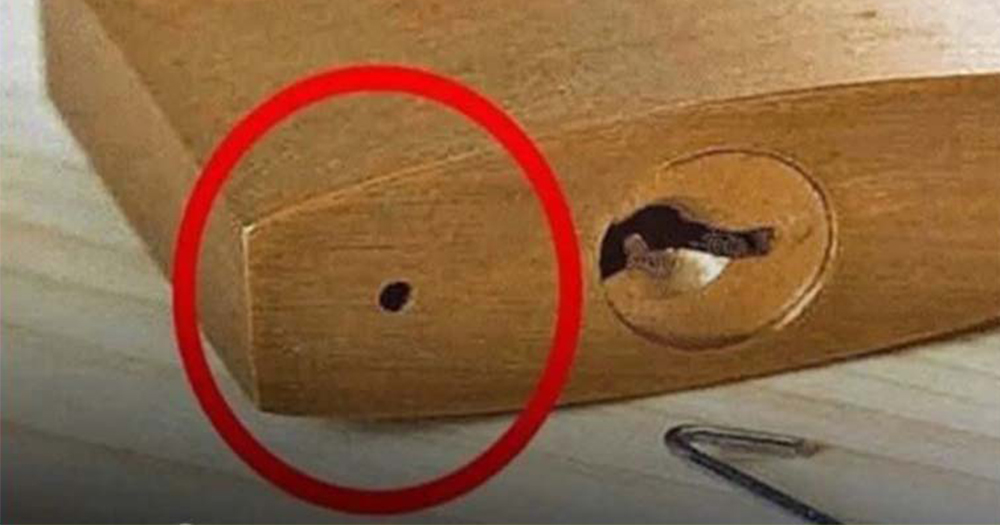

I have dozens of padlocks at home and always use one when I go to the gym or the public bath. Over time, I’ve noticed a small hole on them, but I never really thought much about it.
That changed when my daughter got curious and asked what the hole was for. I decided to look it up — and the reason was something I never would have guessed…
The tiny hole has a hidden purpose
I think most people have a lock at home – and they’re actually fascinating! Both kids and young adults can find locks intriguing and useful in different situations. Locks aren’t just about keeping things secure; they have a unique design that serves a specific purpose, and they’ve evolved over time to become more advanced and reliable.
It’s interesting to think about how something as simple as a lock can play such an important role in our daily lives, from protecting personal items to ensuring safety in public spaces. There’s also a bit of mystery around how they work, making locks something that sparks curiosity in many people.
So, have you ever noticed a tiny hole next to the keyhole on your lock? It’s easy to overlook, but once you know what it’s for, you’ll never see locks the same way again…

Why is there a small hole in padlocks?
As mentioned, locks are designed to keep our belongings safe, whether on gates, cabinets, or lockers. But when used outdoors — on fences, sheds, or even at the public bath — they’re constantly exposed to rain, humidity, and changing weather conditions.
Over time, this can lead to rust, making the lock stiff and difficult to open.
So, what’s the secret behind those small holes? They’re actually built-in drainage systems! These holes allow water to escape, preventing it from getting trapped inside and causing corrosion. When a padlock is used outdoors, water can eventually seep inside through the holes at the top where the shackle connects.
The small hole at the bottom, known as a weep hole, allows the water to drain out. This helps prevent rust and corrosion that would occur if the lock body simply filled with water. Without them, locks would rust much faster, leaving you struggling to turn the key — or worse, completely locked out.
Another meaning
The weep hole at the bottom of the padlock not only helps drain water, but it can also be used to introduce a small amount of oil into the lock body. Applying oil through the weep hole helps to lubricate the internal components, reducing friction and further protecting against rust and corrosion. This simple maintenance step can keep the lock functioning smoothly and extend its lifespan, especially when exposed to the elements.
So, next time you buy a lock, check for these tiny but essential holes. And if your lock already has one, make sure it’s facing downward after a rainstorm to help drain any water. A simple detail that makes a huge difference!
Not everyone knows about this little lock feature, so feel free to share this article and help your friends learn something new along the way. It’s always great to pass on useful tips that can make life a little easier!
Best Of
Science confirms Kelly Brook, 45, has the perfect body proportions


In a world that often demands conformity, Kelly Brook is a breath of fresh air—an unapologetic, stunning representation of beauty in its most natural and confident form. Her curvy figure isn’t just beautiful; it’s magnetic, challenging the narrow confines of what society once deemed perfect.
Kelly is more than a symbol of beauty — she’s a statement. She embodies the truth that beauty is boundless, not defined by any single shape or size. Her presence serves as a quiet rebellion against the unrealistic ideals that have held so many captive for so long.
Society’s idea of the perfect woman
For as long as most can remember, the “perfect” body has been equated with slender, small frames. This ideal has been sold to us relentlessly, filling our minds with an image that doesn’t reflect the reality of most women’s bodies.
Thankfully, a shift is happening. Body Positivity and Body Neutrality are rising movements that demand we break free from these restrictive definitions and recognize that beauty isn’t a singular concept. Beauty comes in countless forms, and each body tells a unique story worth celebrating.
Through the years, society’s idea of the perfect woman has morphed. First, there was the legendary Marilyn Monroe, whose curves were adored by millions. Then came the rail-thin models of the ’90s, like Kate Moss, who sparked a new vision of beauty.

But it wasn’t always this way. Before them, figures like Elizabeth Taylor or Kim Kardashian epitomized beauty with their hourglass proportions. Each decade redefines the ideal body, shaping our collective desires and perceptions. But the truth is, these ideals are never set in stone—they change, they shift, they evolve.
More recently, science has begun to weigh in, offering a new perspective on the “perfect” female body. Researchers from Texas University have challenged the old ideals of the hourglass, suggesting that a fuller, curvier body is now more widely embraced as ideal.
Outdated standards
Their studies suggest the perfect body lies within certain proportions—one with a BMI of 18.85, a bust measurement of 93 cm, a waist of 61 cm, and hips around 87 cm. And then there’s the hip-to-waist ratio, which they claim should fall between 0.65 and 0.75 for the body to be considered ideal.
When you look at Kelly Brook, you see this new definition come to life. With a BMI of 18.5 and a body that fits snugly within these newly discovered proportions, Kelly’s figure is a reflection of this modern-day ideal.
What once might have been labeled as “plump” by outdated standards is, in reality, the embodiment of beauty by today’s scientific and cultural measures. Her figure isn’t a mistake; it’s perfect in the way only a natural, unapologetic body can be.
But Kelly Brook is of course not just her body, even though it has been a key part of her career for many years. Her career has taken her across both the UK and the US, and she fondly remembers the “really fun” ’90s as a highlight of her journey.
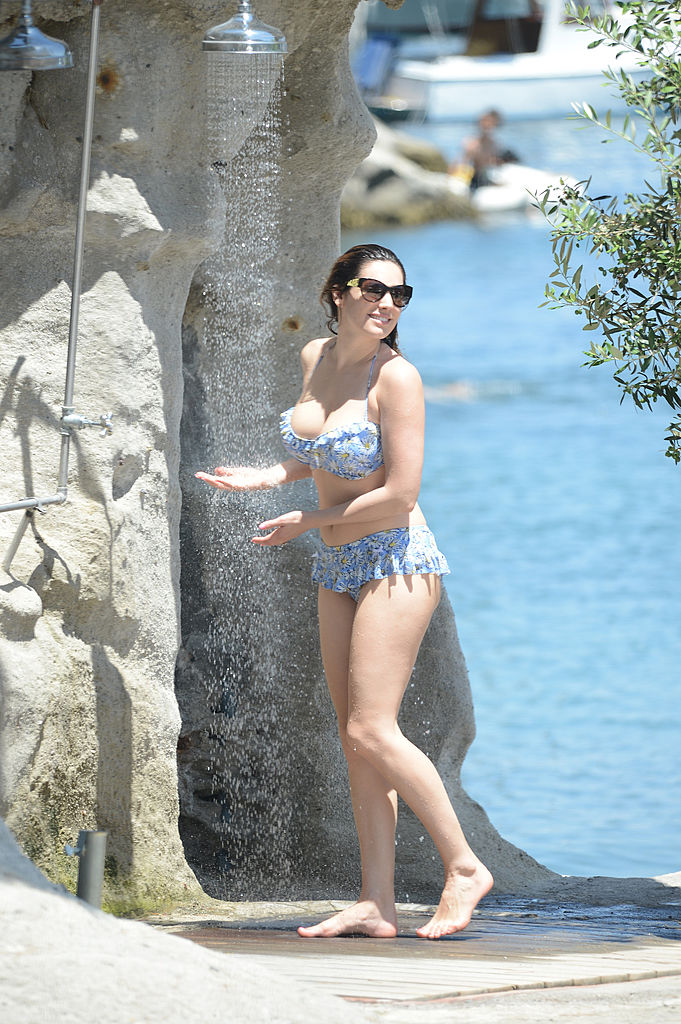
In fact, the English model, consistently voted one of England’s sexiest women, has been enchanting audiences with her timeless beauty and glamorous presence since she began her modeling career at 18
Kelly, who has previously been in high-profile relationships with stars like Jason Statham, Billy Zane, and Danny Cipriani, married her longtime boyfriend Jeremy Parisi in July 2022, after dating since 2015.
In 2024, Kelly Brook received praise from her husband, Jeremy, for her ”amazing body,” even though the model herself has said she’s getting “bigger.”

Kelly opened up about aging and how the showbiz industry has evolved over the years, sharing, ”I’m getting older, bigger. Everything changes, but I do think the industry is kinder these days. I don’t think it’s fashionable to judge women in the same way.”
Sadly, Kelly revealed to the Express that she had been targeted by trolls for her fluctuating weight. However, the actress shared that she sees social media as ”great” because it allows her to ”answer back” publicly.
She explained at the time: ”You can just answer back, you can get that engagement straight away and you can have a conversation with people [who are misinformed] and say, ‘Actually, that’s not the case.’”
The search for the “perfect” body has always been more than just a societal obsession; it’s been a quest that mirrors our evolving cultural and personal understanding of beauty. But as the definition of perfect changes again and again, we come to understand something crucial—there is no one ideal.
There is no single “perfect” body. There is only beauty in all its shapes, sizes, and forms. The true revolution lies in learning to love and embrace the body we’ve been given, to let go of the impossible comparisons, and to find power in our own uniqueness.
And as we take this journey, one thing becomes clear: the perfect body isn’t one defined by anyone else. It’s the body that feels strong, confident, and alive in its own skin. It’s the body that is real, the one that reflects a person’s essence and spirit.
The beauty lies not in conformity, but in individuality. And in this new world, Kelly Brook stands as an enduring reminder — true beauty is not about size, but about embracing who you are.
Trending
-

 Entertainment1 year ago
Entertainment1 year agoJohn Wayne’s son speaks on military service, Hollywood life and his dad, ‘The Duke’ – My Blog
-

 Entertainment1 year ago
Entertainment1 year ago40 Legendary John Wayne Quotes – My Blog
-
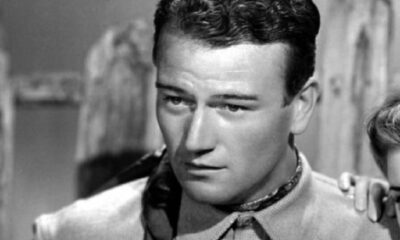
 Entertainment1 year ago
Entertainment1 year agoNew biography reveals the real John Wayne – My Blog
-
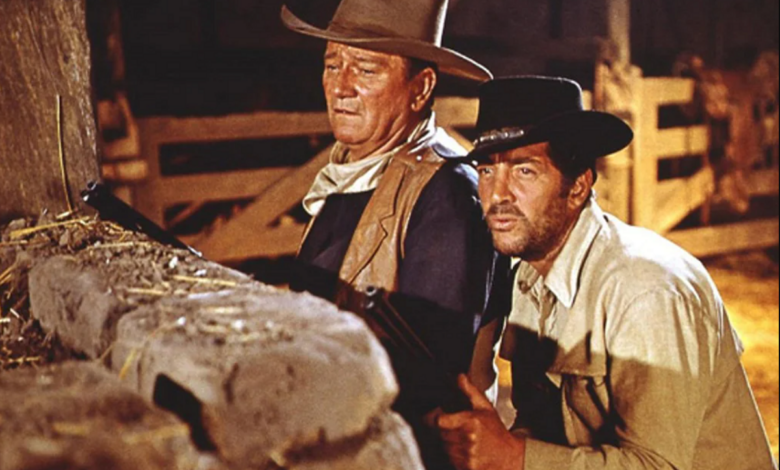
 Entertainment2 years ago
Entertainment2 years agoWhy one POPULAR ACTOR was FIRED from THE SONS OF KATIE ELDER and lost his career as a result! – Old western – My Blog
-
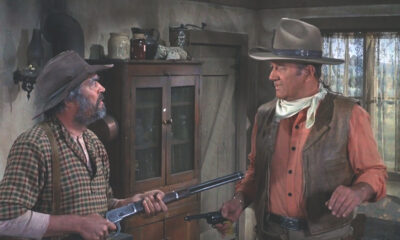
 Entertainment1 year ago
Entertainment1 year agoRio Lobo (1970) marked the last collaboration between John Wayne and Howard Hawks. – My Blog
-
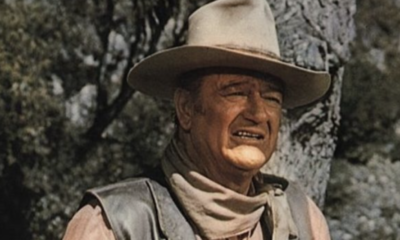
 Entertainment1 year ago
Entertainment1 year agoJohn Wayne and the ‘Bonanza’ Cast Appeared in This Epic Coors Light Commercial – My Blog
-
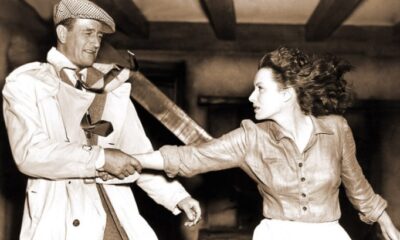
 Entertainment1 year ago
Entertainment1 year agoHow Maureen O’Hara Broke Her Hand During Iconic Scene With John Wayne – My Blog
-
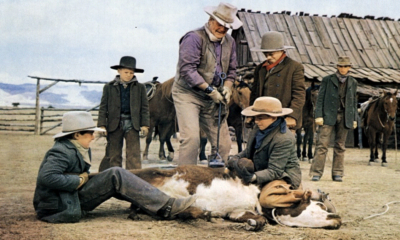
 Entertainment1 year ago
Entertainment1 year agoDid John Wayne really have a good time filming 1972’s The Cowboys? – My Blog



